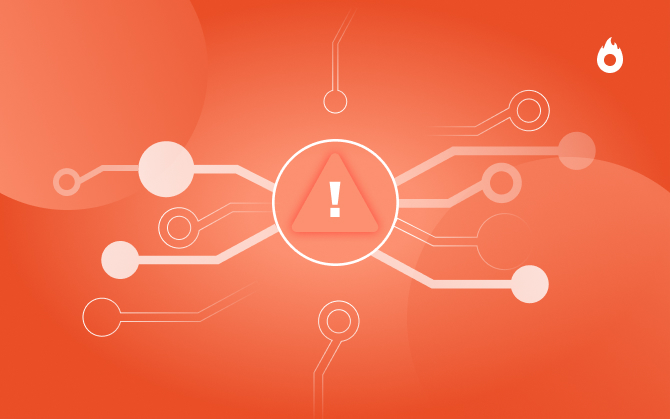
The 5 Main Challenges of Technological Innovation
In spite of all its advantages, technology still has some obstacles to overcome. Check them out.

What will we see in this post
Technological innovation is present in our routines without us even realizing it and, what’s best, this innovation makes practically everything around us easier.
The changes brought about through technological innovation, however, also give rise to new challenges. It’s important to be aware of these challenges to be able to think critically about them and implement solutions.
Here are the five main challenges of digital innovation:
1. Digital inclusion
Being inclusive has always been and will always be an obstacle to technological innovation.
Inclusion relates to technological innovation in two ways: first, not everyone has access to the internet; second, not everyone who accesses the internet will have the same experience.
Addressing digital inclusion means trying to find ways to get more people online, and improving the experience of all users who currently use the internet.
An example of digital inclusion is including alt-text for images so that users with visual impairments can still consume visual content.
Digital inclusion also includes things like removing physical barriers to internet access and educational programs to increase digital literacy.
2. Critical thinking
Technological innovation provides quick access to everyday information and world news, but this can also lead to a lack of critical thinking.
Critical thinking is the ability to analyze information and make informed judgements.
With so much information readily available, many users choose to let others make decisions for them. They allow whatever they read to inform their opinion without examining it critically.
How often have you been in a conversation with someone spreading fake news? Or maybe you yourself have jumped to a conclusion without reading anything beyond a headline.
There’s so much information available out there, so it’s up to individual users to critically analyze everything they come across. Unfortunately, most users don’t take the time to do so.
3. High investment
One of the problems of the digital revolution is the investment that needs to be made, which is quite high for small and medium entrepreneurs.
In the beginning, the investment needed to implement certain technologies in a business may be higher than you’d expect. However, it’s important to stress that there’s usually a good return on investment. So it’s money well spent.
Keep in mind that a person who is starting a business is not always willing to make such a high investment right away.
That’s why it’s necessary to be prepared and even think about which technological solutions are the most important when you’re starting out.
4. Product obsolescence
Even though technological innovation makes it possible for new products to come out every other day, keep in mind that this is a double-edged sword.
On one hand, technology improves and helps make more efficient products, on the other hand, products quickly become obsolete.
This is clearly the case with smartphones. A three-year-old smartphone is not as powerful as the most recent models.
The amount of e-waste in the world has greatly increased and it’s not slowing down anytime soon.
It seems paradoxical that we need new technologies to effectively stop e-waste, but it’s the reality of yet another challenge of technological innovation.
5. Underqualified workers
Do you remember what we said about the problem of digital inclusion?
The lack of technological innovation in some areas may actually lead to the development of underqualified employees.
Because digital inclusion does not happen spontaneously and efficiently in all regions of the world, lots of people don’t have access to what’s new.
Since the market is always looking for people that keep up with the latest technologies, the lack of technological knowledge also increases unemployment.
But despite this challenge, because of access to information, it’s possible to find people who
are very well qualified for various types of services.
In all kinds of sectors, education has been shaping the industry according to technological innovation. In the past, the idea of studying and learning for free was impossible, but today it has become very common.
Advantages of technological innovation
Despite the challenges presented earlier, there are several advantages to technological innovation. Check some of them out below:
1. Access to education
Before technological innovation, nobody had access to distance education. Even though we used to hear classes taught on the radio, even letters, that wasn’t a well-thought-out process.
With high-speed internet access people can access online courses, and even watch live classes from someone who lives thousands of miles away.
Nowadays, all you need to study anything is a mobile device or a computer with an internet connection. This means people can better prepare for the job market and pretty much all areas of life in which they’d like to expand their knowledge.
View this post on Instagram
2. Increase in productivity
Inside companies, technological innovation has always been welcomed and embraced.
Electric circuits, for example, that control machines, allow industries to increase their productivity exponentially. What used to take two days to be produced, now takes only a few hours.
In addition, activities are not only more efficiently carried out, but new jobs have also been created.
Software developers and hardware creators have received industry demands quite well.
Technology has certainly brought about some difficulties, but it has opened doors and created opportunities for everyone who was able to keep up with it.
3. Metrics and data
Today, storing data related to your business is no longer a problem.
Physical storage has been replaced by cloud storage.
Not only have we changed where we store information, but we’ve also seen a change in how much information is available.
The metrics and data of any business have become more accessible and, with that, it’s possible to think about more assertive initiatives to improve any part of the business.
With that information in hand, increasing sales and observing the way audiences behave have become easy tasks.
4. Relationship with customers
Technology has not only allowed businesses to become closer to their customers and vice versa, but it has also created new opportunities for dialogue.
Social media, blogs, and other communication channels have made relationship marketing more common among brands.
On top of maintaining close contact with customers, it’s possible to define personas and identify which customers are most (or not at all) likely to buy certain products.
5. Sales increase
Sales strategies along with relationship marketing have become more robust and more efficient.
Before technological innovation, sharing information was hard, and it didn’t always reach its target audience. TVs, billboards, and radios could be used to advertise, but they’re generally seen as somewhat intrusive.
Even though it’s still common to put ads on TV, other marketing strategies make for a better experience when surfing the web.
Social media, sites, blogs, emails, and other means of communication help educate potential customers and can attract new audiences for businesses.
VIDEO: Sales techniques: how to seel online | Sales Tips

Be a part of the digital transformation
Technological innovation is already a part of most people’s lives and it’s not slowing down.
As you’ve seen, some obstacles need to be overcome, but the advantages the digital era has brought about are undeniable.
The role of entrepreneurs is to not only use all new technologies to benefit their businesses, but also to find ways to solve minor social problems.
Check out this post if you’d like to learn more about digital entrepreneurship in 2022.





